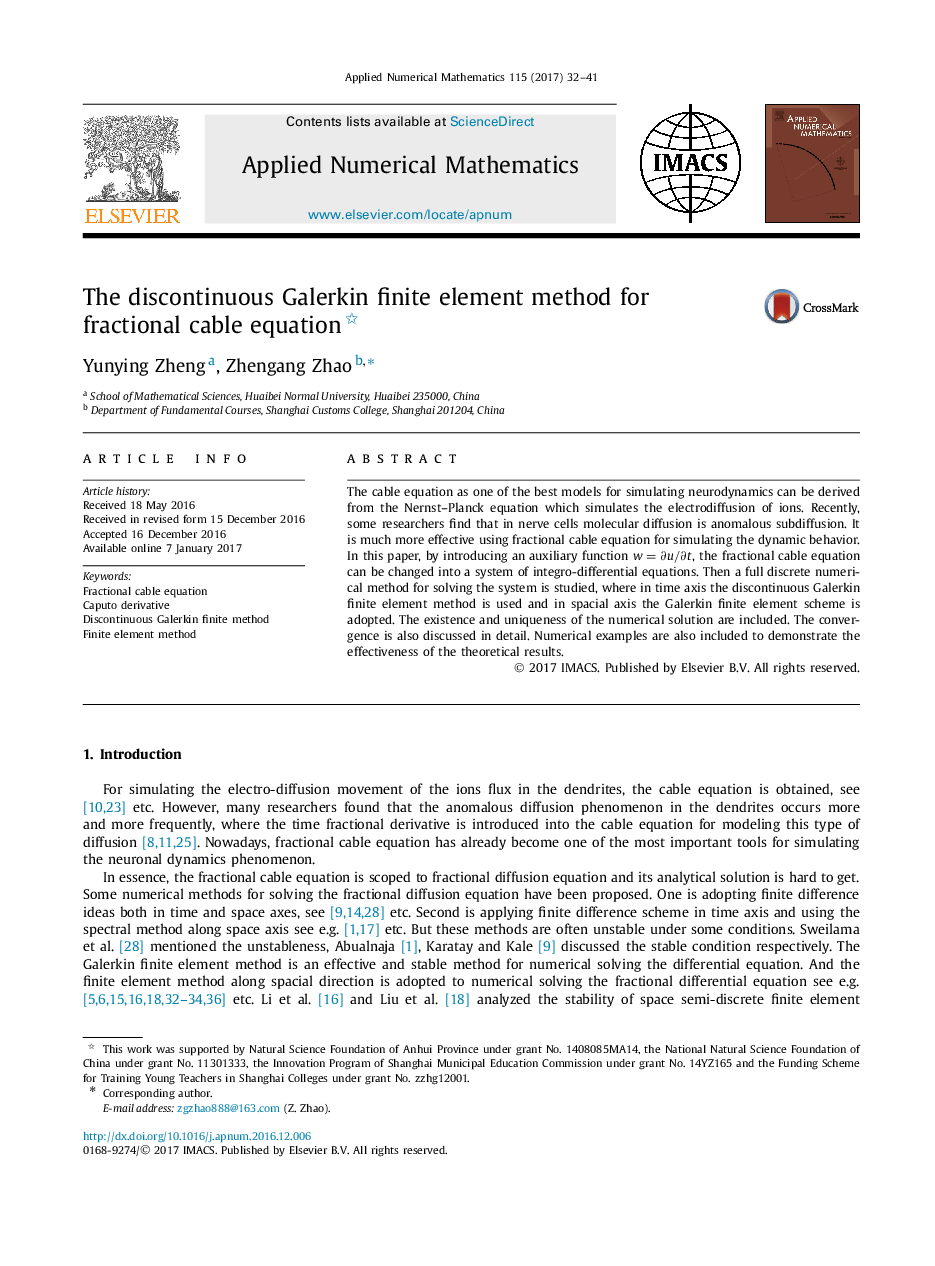| Article ID | Journal | Published Year | Pages | File Type |
|---|---|---|---|---|
| 5776692 | Applied Numerical Mathematics | 2017 | 10 Pages |
Abstract
The cable equation as one of the best models for simulating neurodynamics can be derived from the Nernst-Planck equation which simulates the electrodiffusion of ions. Recently, some researchers find that in nerve cells molecular diffusion is anomalous subdiffusion. It is much more effective using fractional cable equation for simulating the dynamic behavior. In this paper, by introducing an auxiliary function w=âu/ât, the fractional cable equation can be changed into a system of integro-differential equations. Then a full discrete numerical method for solving the system is studied, where in time axis the discontinuous Galerkin finite element method is used and in spacial axis the Galerkin finite element scheme is adopted. The existence and uniqueness of the numerical solution are included. The convergence is also discussed in detail. Numerical examples are also included to demonstrate the effectiveness of the theoretical results.
Related Topics
Physical Sciences and Engineering
Mathematics
Computational Mathematics
Authors
Yunying Zheng, Zhengang Zhao,
